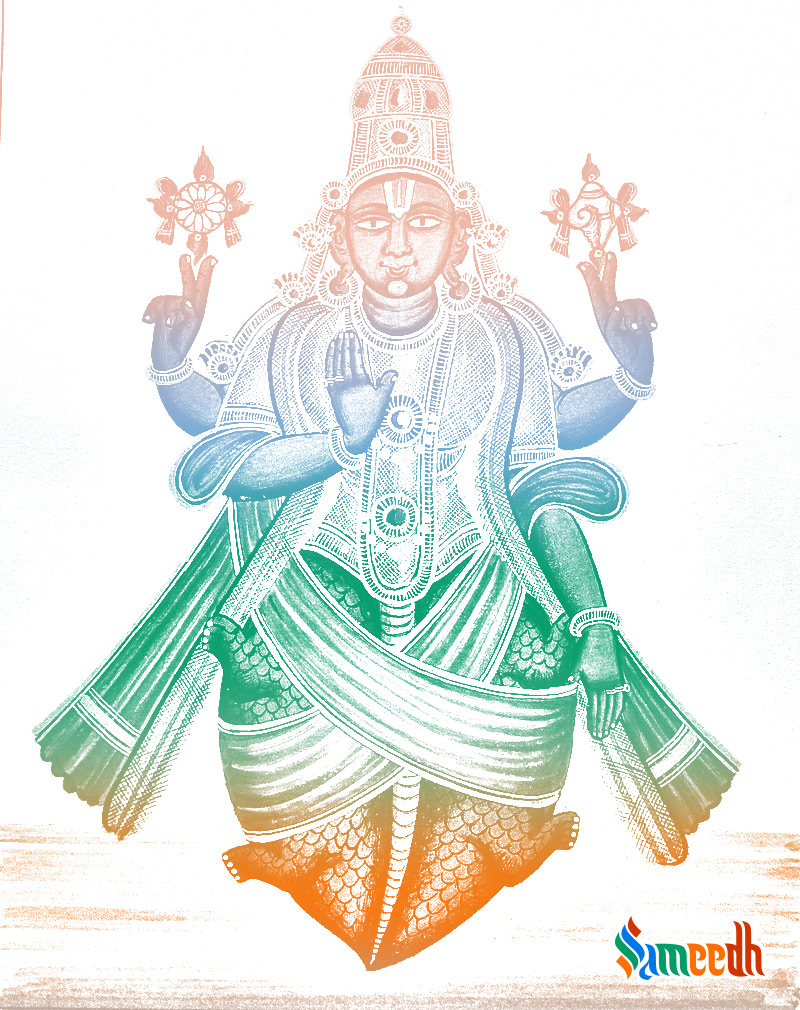Kurma (Sanskrit: “Tortoise”) is one of the Hindu god Vishnu’s ten avatars (incarnations). It is related to the tale of the ocean of milk churning in this incarnation. This one is the story of Samundra Manthan, or The Churning, that involves all the Gods and Asuras, or Demons.
In Hinduism, an avatar is the embodiment of a deity in human or animal form to counterbalance some particular evil in the universe. Usually referred to as the ten manifestations of Vishnu, an Avatar plays a great role in the history of Indian Mythology. Matsya (fish), Kurma (tortoise), Varaha (boar), Narasimha (half-man, half lion), Vamana (dwarf), Parashurama (Rama with the axe), Rama (hero of the Ramayana epic), Krishna (the holy cowherd), Buddha, and Kalkin (the incarnation yet to come) are the ten manifestations of Vishnu.
The Bhagavad Gita gives one example of this phenomenon when Krishna tells Prince Arjuna:
“Whenever there is a decline of righteousness [Dharma] and rise of unrighteousness then I send forth Myself. For the protection of the good, for the destruction of the wicked, and for the establishment of righteousness, I come into being from age to age.”

The Story Of Samudra Manthan
Kurma (Sanskrit: “Tortoise”) is one of the Hindu god Vishnu’s ten avatars (incarnations). Vishnu is related with the tale of the ocean of milk churning in this incarnation. This one is the story of Samundra Manthan, or The Churning, that involves all the Gods and Asuras, or Demons.
The devas (Indra and the other gods) were cursed by the Sage Durvasa, who took away all of their power. After defeating them in combat, the asuras gain control of the cosmos. The devas seek help from Lord Vishnu, who informs them that only the nectar found at the bottom of the cosmic ocean of milk (Ksheer [milk] + sagar [ocean]; sometimes referenced to the Milky Way galaxy) can restore their strength and immortality. However, the ocean would have to be churned, which they couldn’t achieve on their own (considering they were bereft of energy). They’d have to enlist the help of the asuras, enticing them with the nectar.
The devas enlisted the help of the mountain Mandara to serve as a rod for the churning. The king of snakes, Vasuki, was approached to act as the churning rope. The demons were in charge of the snake’s head, while the gods were in charge of its tail. The churning lasted a thousand years. The churning was so powerful that the mountain started to sink. The mountain was then sustained on Lord Vishnu’s back in the form of a massive turtle, known as the Kurma avatar. The ocean emitted a dreadful toxin. Since Lord Shiva drank the poison, his throat has turned blue ever since. The gods and asuras split a number of riches (14 in total) that arose from the water.
The devas then turned to Vishnu for help. He disguised himself as a lovely woman named Mohini and used her to distract the asuras. She delivers some nectar to each of the devas after volunteering to share the nectar to all of them. The nectar had been delivered to the devas by the time the remainder of the asuras discovered what was going on and that the lovely Mohini was indeed Lord Vishnu. In combat, the reinvigorated devas were able to overcome the asuras and reclaim their grandeur.